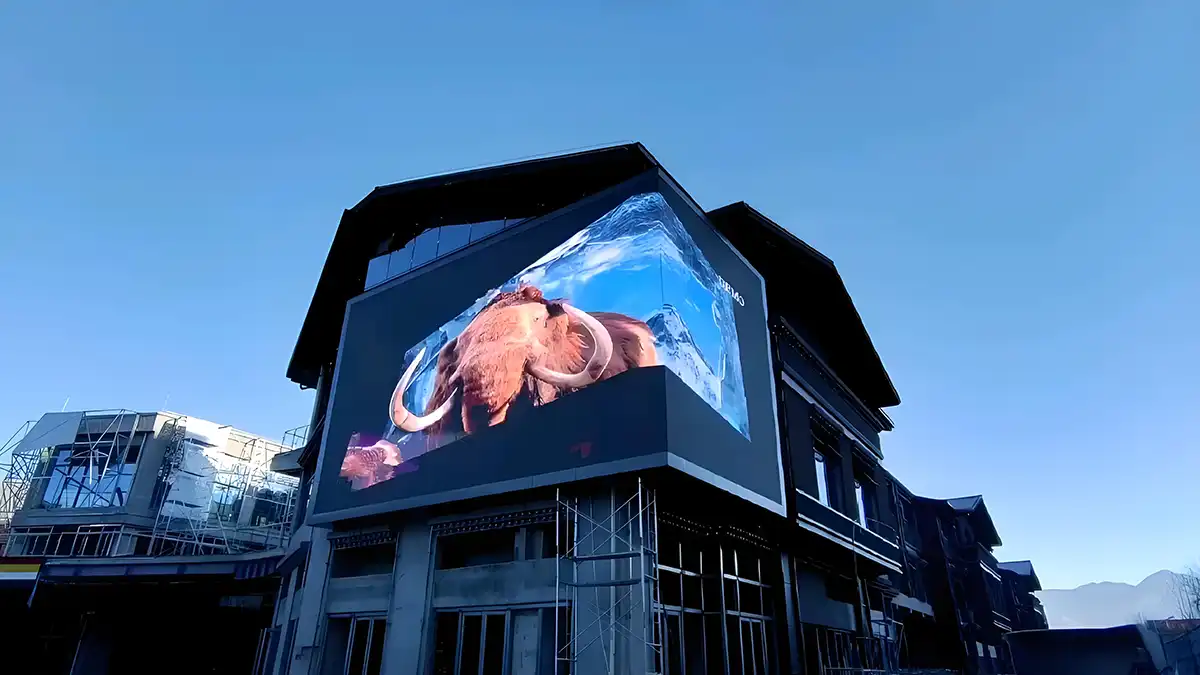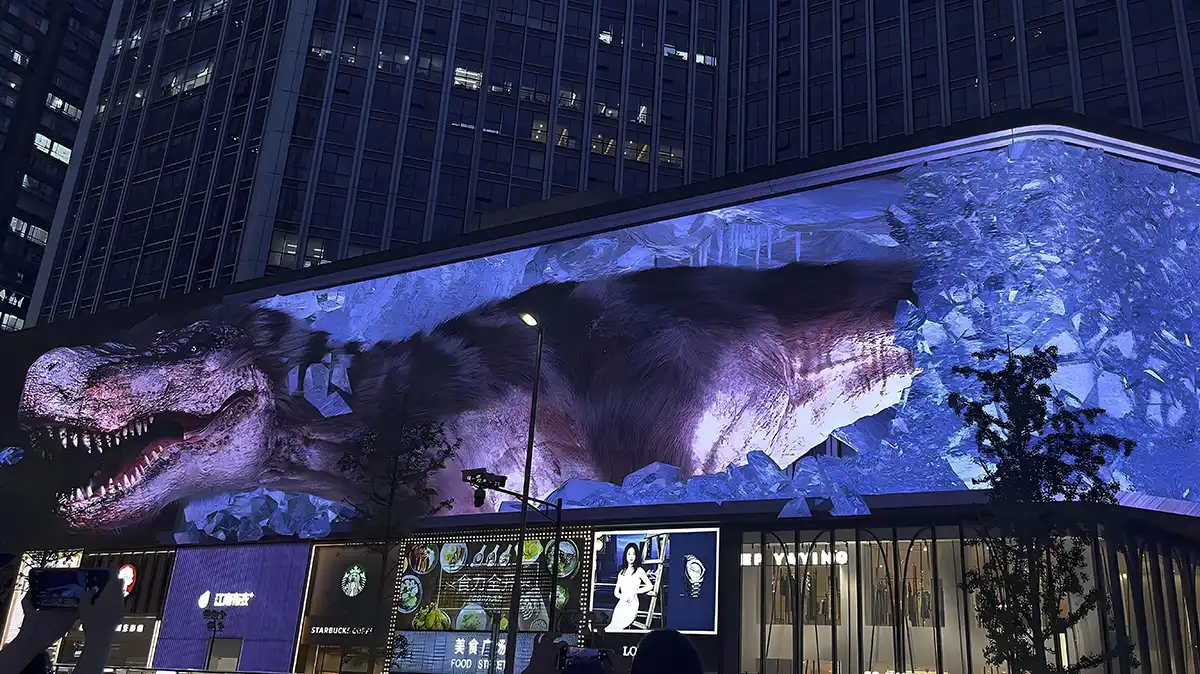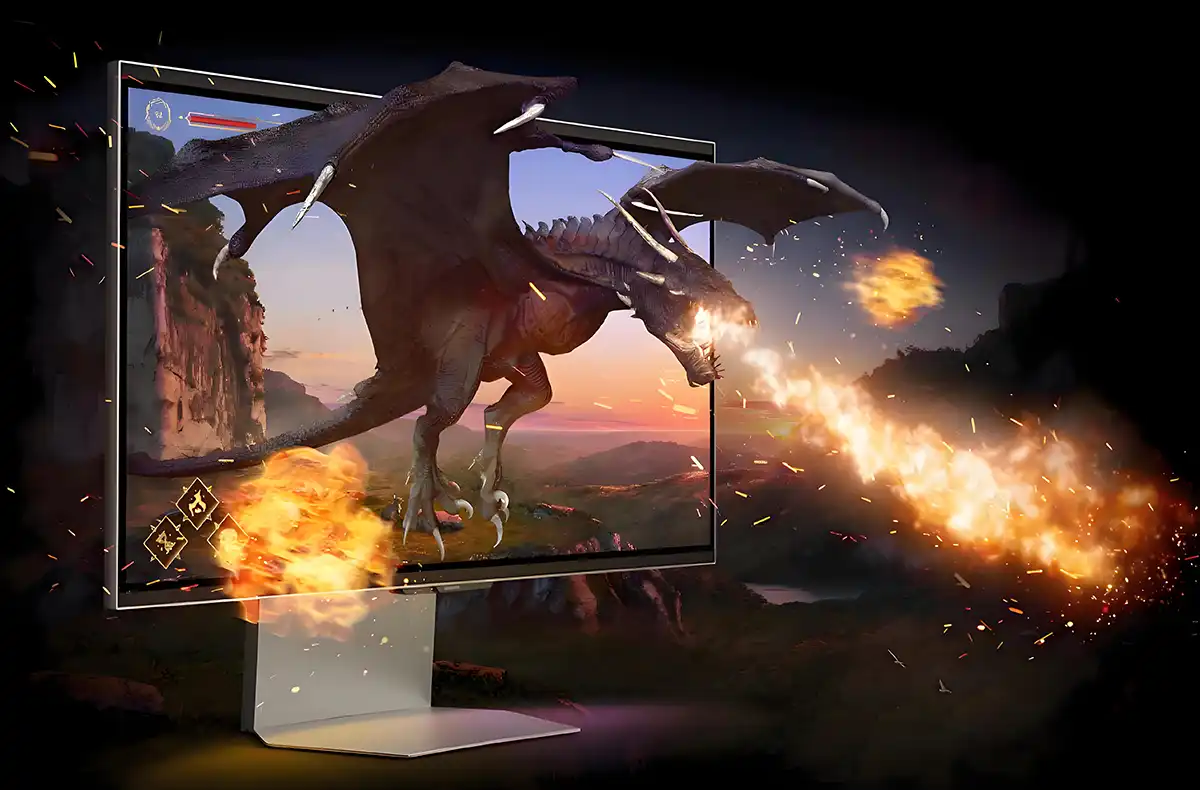3D display technology has created more immersive visual experiences in gaming, entertainment, education, and professional applications by presenting images with depth perception. Despite its advantages, many challenges remain, particularly when using LED LCD panels. These challenges include limited viewing angles, reduced resolution per eye, motion artifacts, high costs, limited content availability, and concerns about LED LCD lifespan. Addressing these issues is crucial for achieving better performance, visual comfort, and long-term display reliability.
3D displays create the illusion of depth by delivering separate images to each eye or projecting volumetric images into space. The technology can rely on stereoscopic imaging, autostereoscopic methods, holographic projections, or volumetric display systems. In LED LCD 3D displays, the quality of the backlight and LCD panel determines brightness, contrast, and image stability.
Stereoscopic Displays: Require glasses to separate left and right images.
Autostereoscopic Displays: Glasses-free systems using lenses or parallax barriers.
Holographic Displays: Create volumetric 3D images visible from multiple angles.
Mahulised näidikud: Project light into a three-dimensional space for applications like medical imaging and industrial visualization.
 Technical Challenges
Technical ChallengesAutostereoscopic displays often have narrow optimal viewing zones. Moving outside these zones can distort images or eliminate the 3D effect. LED LCD panels may also lose brightness and contrast at off-axis positions.
Stereoscopic 3D divides the screen resolution between both eyes, reducing clarity for each eye. Crosstalk occurs when pixels intended for one eye are partially visible to the other, creating ghosting and reducing visual comfort.
Fast-moving content can create motion blur and flicker. The refresh rate and response time of LED LCD panels are critical for minimizing these effects. Low-performance panels may intensify motion artifacts, causing viewer discomfort.
LED backlights degrade over time due to high temperatures, maximum brightness settings, and continuous operation. Typical lifespans range from 50,000 to 100,000 hours, but extended use without proper cooling can shorten panel longevity.
3D-ekraanide pikaajaline vaatamine võib põhjustada silmade väsimust, peavalu või iiveldust, mille põhjuseks on sageli silmafookuse ja tajutava sügavuse mittevastavus. Ebaühtlane heledus ja halb paneeli kalibreerimine võivad neid mõjusid süvendada.
Mõned kasutajad ei suuda vasak- ja parempoolseid pilte õigesti ühendada, eriti kui sisu sisaldab keerulist sügavust või kiiret liikumist. Ebatäpse kalibreerimisega LED-LCD-ekraanid võivad sügavuse tajumise probleeme süvendada.
Lastel, eakatel ja nägemispuudega inimestel võib 3D-efektide nägemisega raskusi olla. Reguleeritav heledus ja kontrastsus võivad aidata ebamugavustunnet vähendada, kuid ei pruugi tajuprobleeme täielikult lahendada.

Natiivset 3D-sisu, näiteks filme, mänge ja õppematerjale, on endiselt vähe. LED-LCD 3D-ekraanidele sisu tootmine nõuab sageli kõrgemaid tootmiskulusid ja eriteadmisi.
3D-sisu ei pruugi eri ekraanitüüpidel ühtlaselt toimida. Stereoskoopilised, autostereoskoopilised ja holograafilised ekraanid vajavad sageli erinevaid vorminguid.
LED LCD 3D-ekraanid maksavad tavaliselt rohkem kui tavalised 2D-ekraanid, eriti suurte ja kõrge eraldusvõimega paneelide puhul. Prillipõhised süsteemid vajavad ka lisatarvikuid, mis suurendab kogukulusid.
LED-LCD-paneelide kalibreerimine ja joondamine on pildikvaliteedi säilitamiseks vajalik.
Taustavalgustuse vahetamine või paneeli remont võib olla kulukas.
Kõrged kulud, ebamugavustunne ja piiratud sisu vähendavad kasutuselevõttu kodudes ja väikestes kontorites.
Väljakutse | Kirjeldus | Efekt | Võimalik lähenemisviis |
Vaatenurk | Kitsad optimaalsed tsoonid | 3D-efekti kadumine väljaspool telge | Mitmevaatelised paneelid, objektiivi optimeerimine |
Resolutsioon | Pilte jagatakse silmade vahel | Vähenenud selgus | Kõrgema eraldusvõimega paneelid, parem skaleerimine |
Läbikõlav | Pikslid lekivad vastassilma | Kummitus, pinge | Paneeli kalibreerimine, täiustatud optika |
Liikumisartefaktid | Hägusus/värelus kiire liikumise korral | Ebamugavustunne, iiveldus | Kõrge värskendussagedus, kiire reageerimisajaga LCD |
LED-i lagunemine | Taustvalgus hämardub aja jooksul | Lühem eluiga, ebaühtlane heledus | Mõõdukas heledus, tõhus jahutus |
Sisu nappus | Piiratud meediakasutus | Vähendatud kasutusjuhtumid | Julgusta 3D-sisu tootmist |
Maksumus | Kallis riistvara | Piiratud kasutuselevõtt | Taskukohased paneelid, hulgitootmine |
Temperatuur:Liigne kuumus kiirendab taustvalgustuse halvenemist.
Heledus:Pidev kõrge heledus lühendab LED-ide eluiga.
Pidev kasutamine:Katkestusteta töötavad paneelid lagunevad kiiremini.
Keskkonnategurid:Tolm ja niiskus võivad sisemisi komponente kahjustada.
Tagage korralik jahutus ja ventilatsioon.
Vähendage heledust optimaalsele, mitte maksimaalsele tasemele.
Planeeri seisakuid, et paneelid saaksid puhata.
Puhastage paneele regulaarselt, et vältida tolmu kogunemist.
Autostereoskoopiline tehnoloogia täiustub tänu täiustatud läätsedele ja valgusvälja kuvaritele, vähendades prillide kasutamist.
Uued LED LCD-paneelid pakuvad 4K+ resolutsiooni silma kohta ja värskendussagedust üle 120 Hz, minimeerides varikujutisi ja virvendust.
Algoritmid saavad pildikvaliteedi säilitamiseks ja silmade väsimise vähendamiseks dünaamiliselt reguleerida heledust, kontrasti ja värvi.
LED-LCD 3D-ekraanide kombineerimine virtuaalse või liitreaalsusega suurendab kaasahaaravust, vähendades samal ajal vaatenurga piiranguid.

K1:Kui pikk on LED LCD 3D-ekraani eluiga?
V:Tavaliselt 50 000 kuni 100 000 tundi, olenevalt kasutusest, heledusest ja jahutusest.
2. küsimus:Kuidas saab liikumisest tulenevaid artefakte minimeerida?
V:Suure värskendussagedusega paneelide ja kiire reageerimisajaga LCD-tehnoloogia kasutamine vähendab hägusust ja virvendust.
3. küsimus:Kas LED LCD 3D-ekraanid sobivad lastele?
V:Reguleeritav heledus ja kontrastsus aitavad, kuid nägemispiirangud võivad taju mõjutada.
4. kvartal:Miks pildikvaliteet aja jooksul halveneb?
V:LED-taustvalgustuse intensiivsus väheneb kasutamisega, mis vähendab heledust ja värvitäpsust.
K5:Kas tarkvarauuendused saavad paneeli eluiga parandada?
V:Püsivara värskendused aitavad optimeerida jõudlust ja vähendada LED-taustvalgustuse süsteemi koormust.
3D-ekraanitehnoloogia LED-LCD-paneelidega pakub kaasahaaravat kogemust, kuid seisab silmitsi mitmete väljakutsetega. Piiratud vaatenurgad, väiksem eraldusvõime silma kohta, liikumisest tingitud artefaktid, silmade väsimus, sisu nappus, kõrged kulud ja LED-taustvalgustuse halvenemine mõjutavad kõik kasutatavust ja pikaajalist jõudlust. Õige heleduse säilitamine, jahutuse tagamine, ekraanide kalibreerimine ja uute paneelitehnoloogiate kasutuselevõtt võivad parandada mugavust, jõudlust ja eluiga. Klaasivaba 3D, kõrgema eraldusvõime, tehisintellekti reguleerimise ja VR/AR-integratsiooni edusammud lubavad ületada praegused piirangud ja laiendada 3D LED-LCD-ekraanide praktilisi rakendusi.
3D LED LCD-ekraanide toimivuse säilitamiseks ja eluea pikendamiseks, säilitades samal ajal kvaliteetse visuaalse kogemuse, on oluline õige kasutamine, mõõdukas heledus ja regulaarne hooldus.
Soojad soovitused
Kuumad tooted
Hankige koheselt tasuta hinnapakkumine!
Võtke kohe ühendust meie müügimeeskonnaga.
Kui olete meie toodetest huvitatud, võtke meiega kiiresti ühendust
Võtke ühendust meie müügimeeskonnaga, et uurida teie ettevõtte vajadustele ideaalselt vastavaid kohandatud lahendusi ja vastata kõigile teie küsimustele.
E-posti aadress:info@reissopto.comTehase aadress:Hoone 6, Huike lameekraaniga tööstuspark, nr 1, Gongye 2. tee, Shiyan Shilongi kogukond, Bao'ani piirkond, Shenzheni linn, Hiina
WhatsApp:+8615217757270